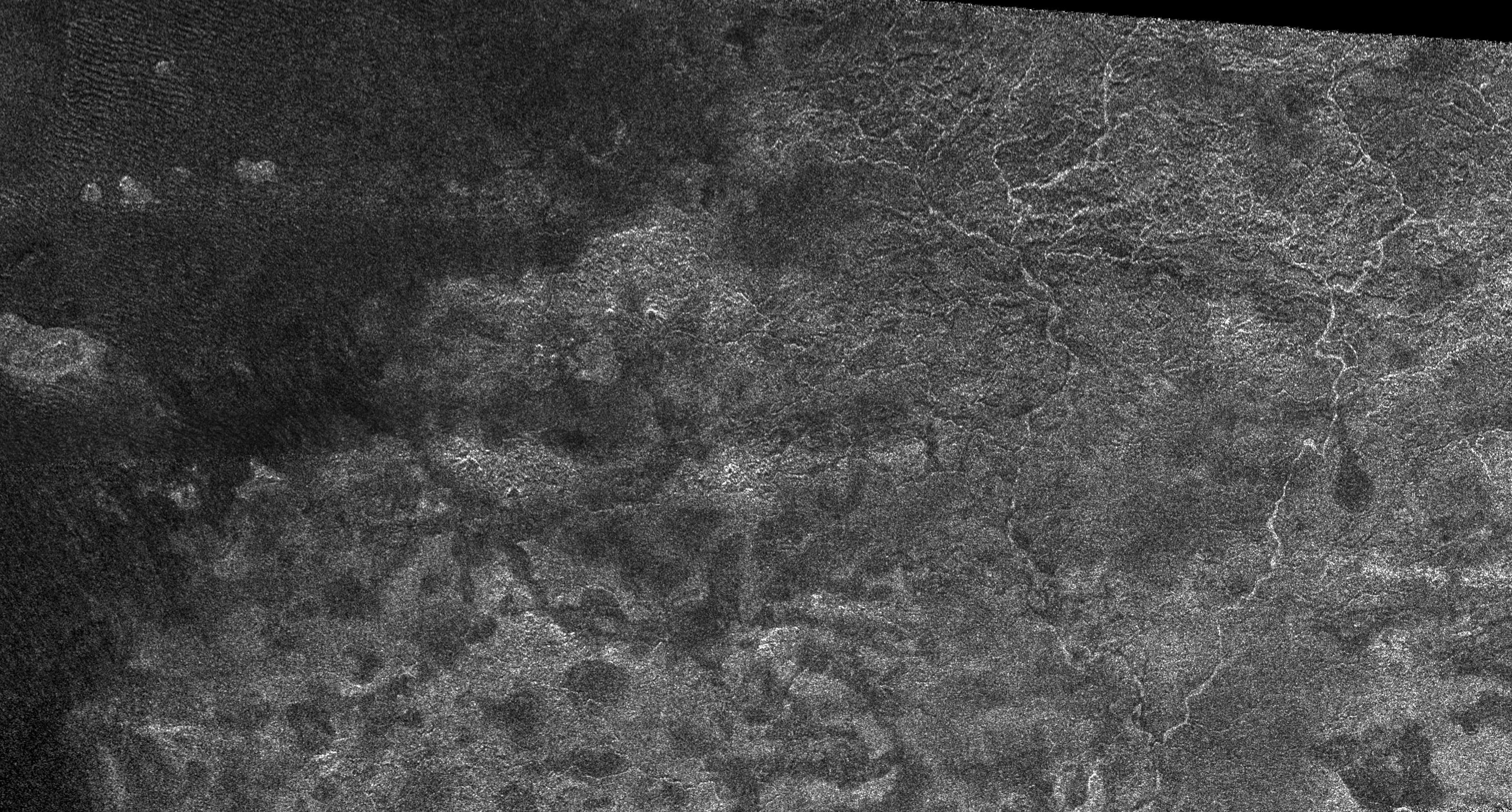Xanadu: Rivers Flowed onto a Sunless Sea

| PIA Number | PIA08428 |
|---|---|
| Language |
|
This image from the Synthetic Aperture Radar instrument on the Cassini spacecraft shows the radar-bright western margin of Xanadu, one of the most prominent features on Titan (see also Radar Images the Margin of Xanadu). In radar images, bright regions indicate a rough or scattering material, while a dark region might be smoother or more absorbing. The image was taken during a flyby of Titan on April 30, 2006.
Narrow, sinuous, radar-bright channels, meandering like a maze, are seen on the right-hand-side of the image. These may be river networks that might have flowed onto the dark areas on the left of the image. Vast, dark areas covered by dunes are seen on the equatorial regions of Titan (see Dunes Galore) and have been referred to as Titan's ¿sand seas.¿ Near the middle of the image is a radar-bright area that has a boundary with the dark sand seas. Because the radar illumination is coming from the top, this indicates that the bright region, Xanadu, is topographically higher than the sand seas.
The Cassini-Huygens mission is a cooperative project of NASA, the European Space Agency and the Italian Space Agency. The Jet Propulsion Laboratory, a division of the California Institute of Technology in Pasadena, manages the mission for NASA's Science Mission Directorate, Washington, D.C. The Cassini orbiter was designed, developed and assembled at JPL. The radar instrument was built by JPL and the Italian Space Agency, working with team members from the United States and several European countries.
For more information about the Cassini-Huygens mission visit http://saturn.jpl.nasa.gov .
Credit: Credit: NASA/JPL
